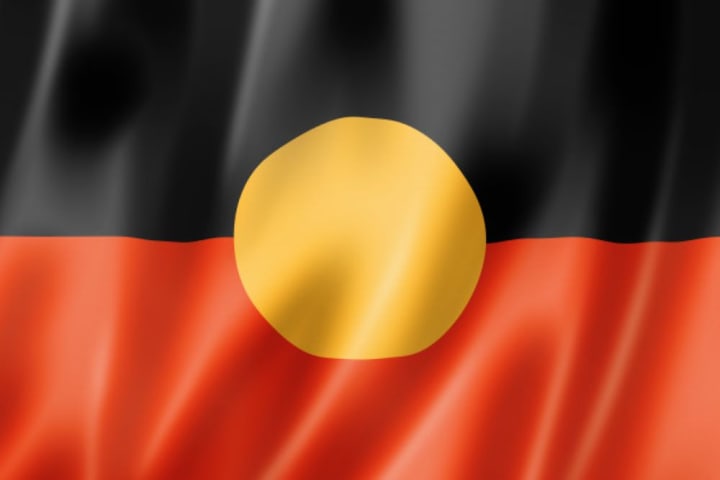
Catherine Astrid Salome Freeman was born on the 16th February 1973 in the Mackay coastal Queensland town of Slade Point, Australia. Her mother is of the Far North Queensland Indigenous KuKu Yalanji people and her father was of the Central Queensland Indigenous Burri Gubba people. Known as Cathy, she spent her youth with her four siblings in Mackay where her childhood was marred by molestation and an alcoholic father prone to violence.
The 1970's was a period of significant change for Aboriginal people and for the nation of Australia with the formation of a shared Aboriginal identity grown from a mass movement of Aboriginal people across the country, migrating from missions and reserves to the cities; learning, trading ideas and exploring shared stories of dispossession and state-control. Yet white Australian racism against Aboriginals was rampant.
As a child Cathy’s talent in running was obvious and she was initially coached by her stepfather. She won her first gold medal as an eight year old at the Queensland State Primary School titles in the 80 metre sprint. With undeniable talent and a burning desire to always be the first across the finish line she committed herself to athletics and was travelling interstate to compete from the age of ten.
As the only Aboriginal sprinter at her meets the road to success had its moments of blatant discrimination and the first time she became aware her race was an issue was in primary school at Mackay. The young runner was never awarded medals for the many races that she would win; instead watching non-Indigenous girls who placed after her receive the glory. But from an early age Cathy made the decision to rise above the racism she would meet along the way, determined not to let it distract her from being the best sprinter she could be.
At sixteen years of age Cathy competed in her first international meet at the 1990 Auckland, New Zealand, Commonwealth Games where as part of the 4 x 100 metres relay she won gold. In doing so Cathy became the first ever Australian aboriginal woman to win a Commonwealth gold medal. That same year she competed in the 100 metres, 200 metres and 4 x 100 relay at the World Junior Games in Bulgaria and was also awarded Young Australian of the Year.
1994 would be Cathy’s breakthrough season. She won gold in both the 200 metres and 400 metres at the 1994 Commonwealth Games in Canada. She would also win a silver medal at the 1996 Atlanta Olympics in the 400 metres breaking the Australian record and achieving a world ranking of number one that same year. She would find herself on the top of the dais when she won gold in the same distance at the 1997 World Championships in Greece. This achievement was a first for any Australian Aboriginal, male or female.

After her win was declared in Athens, Cathy took a two sided flag on her lap of honour; on one side was the Australian flag, on the other was the aboriginal flag. Designed in July 1971 when Aboriginal land rights issues were starting to pervade Australian’s consciousness the Aboriginal flag has three colors. Black represents the Aboriginal people of Australia, red symbolizes the red earth, the red ochre used in ceremonies and Aboriginal peoples’ spiritual relation to the land and the yellow circle in the flag’s centre represents the Sun, the giver of life and protector.
Australia’s awareness and sympathy for Aboriginals regarding complex issues such as land rights and the Stolen Generations had begun to build momentum and whilst Cathy was not overtly political she was beginning to acknowledge her Aboriginal identity and as one of the nation’s most successful sportspeople she embodied the spirit of reconciliation that the nation was working towards.
Cathy’s grandmother was part of the Stolen Generations when the children of Australian Aboriginal and Torres Strait Islander descent were removed from their families by the Australian federal and state government agencies and church missions in the period between approximately 1905 and 1967. On 26 May 1997 as a result of a government inquiry into the practice National Sorry Day, or the National Day of Healing, is now an annual event to remember and commemorate the mistreatment of the country's Indigenous peoples as part of an ongoing process of reconciliation between the Indigenous peoples and the settler population.
Whether it’s called Australia Day, Invasion Day or Survival Day, the 26th of January provides an opportunity for the government to acknowledge successful and inspiring Australians and what they add to the nation. In 1998 Cathy was awarded Australian of the Year and in doing so created history for being the only person to be awarded both Young Australian of the Year and Australian of the Year.

Two years later national expectations were high for Cathy to bring home 400 metres gold in front of her home crowd at the 2000 Olympics in Sydney, Australia. However, not everyone in Australia wanted to see Cathy compete in the Sydney Games with some Aboriginal Elders asking her to boycott the Games in order to protest against racism. Cathy rejected a boycott, saying she was in the Games to run, to compete and to win—not to make a political statement.
On Monday 25 September 2000 in front of a deafening crowd of over 110,000 Cathy entered the Olympic Stadium for the women’s 400 metres final as the firm favorite in one of the most highly anticipated events of the Games. Cathy wore an innovative hooded bodysuit in Australian colors that she had only worn a handful of times in training and only once in a race leading up to the final. Living up to all expectations magnificently she accelerated on the final bend and broke clear of her closest rival to cross the finish line first in 49.11 seconds. Cathy had lived up to her nation’s expectations magnificently and her golden victory has gone down in Australian sporting history.

Cathy did not compete in 2001 but she was part of the 4 × 400-metre relay team that won a gold medal at the 2002 Commonwealth Games in Manchester before retiring from professional competition in 2003. Cathy said much of her drive to succeed stemmed from the passing of her older sister who suffered from cerebral palsy. Ann Marie Freeman died from an asthma attack three days after Cathy won her first gold medal at the Auckland Commonwealth games in 1990. She would always be Cathy’s most significant source of inspiration.
In 2007 Cathy established the Catherine Freeman Foundation, a non-profit organization that focuses on Indigenous children in Australia. The Foundation works with remote Indigenous communities to close the gap in education between Indigenous and non-Indigenous Australian children by offering incentives for children to attend school and acknowledging the strength and wisdom that lies within remote Indigenous communities. The Foundation works with more than 1600 Indigenous children and their families from four of the most remote communities in Australia.
These days, the former sprinter lives a low-key life with her husband James Murch and their daughter Ruby (born in 2011) in the Australian city of Melbourne. Looking back on her athletic career she says she has always been a proud Australian and believes her gold medal win at the Sydney 2000 Olympics was a symbol of hope for all young Australians.






Comments
There are no comments for this story
Be the first to respond and start the conversation.